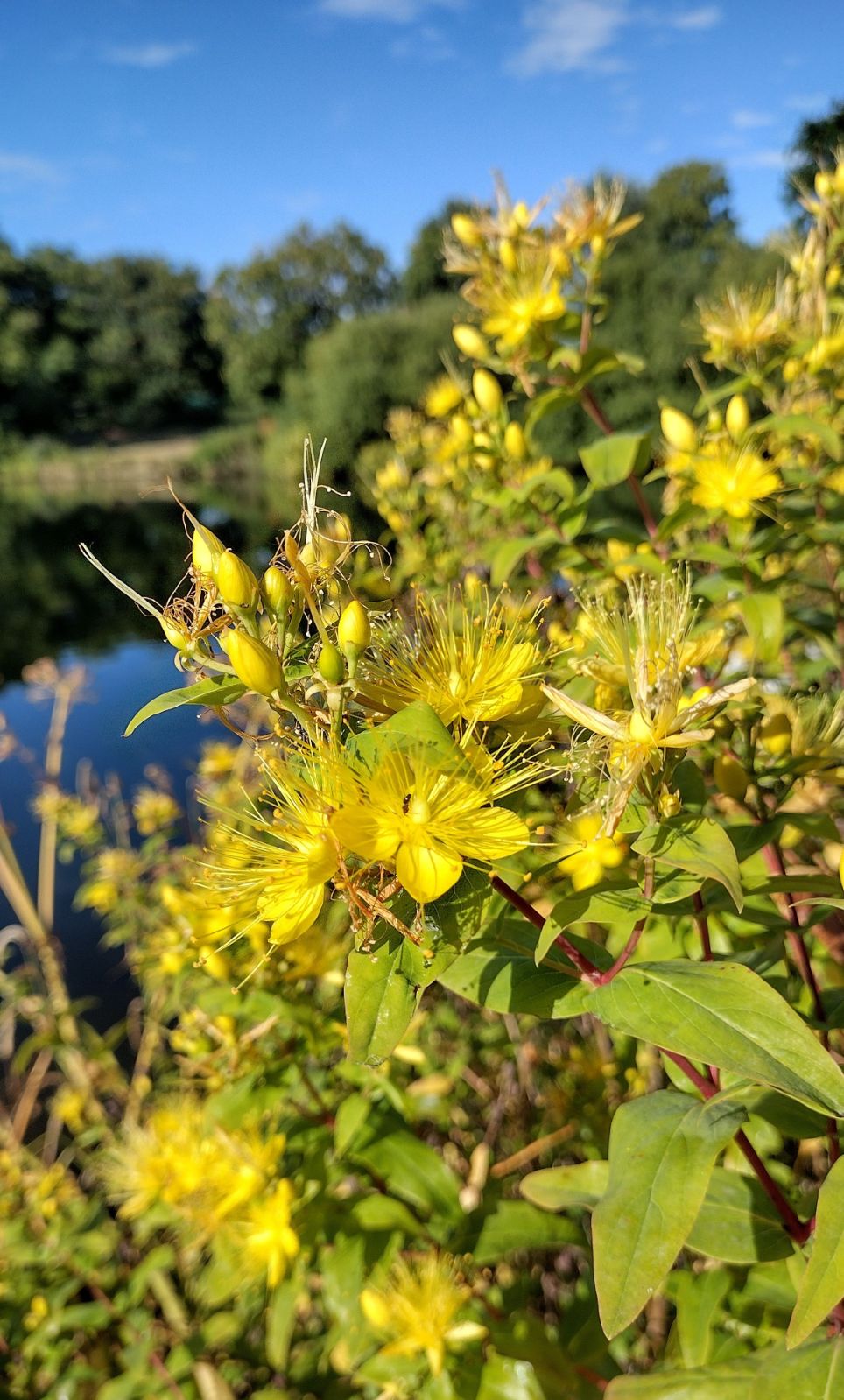Hypericum hircinum
Credits
Article from Bean's Trees and Shrubs Hardy in the British Isles
Recommended citation
'Hypericum hircinum' from the website Trees and Shrubs Online (treesandshrubsonline.
Genus
Infraspecifics
Other taxa in genus
- Hypericum acmosepalum
- Hypericum addingtonii
- Hypericum aegypticum
- Hypericum androsaemum
- Hypericum augustinii
- Hypericum balearicum
- Hypericum bellum
- Hypericum buckleyi
- Hypericum calycinum
- Hypericum cerastoides
- Hypericum chinense
- Hypericum choisianum
- Hypericum cordifolium
- Hypericum coris
- Hypericum × cyathiflorum
- Hypericum densiflorum
- Hypericum 'Eastleigh Gold'
- Hypericum empetrifolium
- Hypericum ericoides
- Hypericum forrestii
- Hypericum frondosum
- Hypericum galioides
- Hypericum grandifolium
- Hypericum 'Hidcote'
- Hypericum hookeranum
- Hypericum hypericoides
- Hypericum × inodorum
- Hypericum kalmianum
- Hypericum kouytchense
- Hypericum leschenaultii
- Hypericum lobbii
- Hypericum monogynum
- Hypericum × moseranum
- Hypericum × moserianum
- Hypericum nudiflorum
- Hypericum olympicum
- Hypericum patulum
- Hypericum prolificum
- Hypericum reptans
- Hypericum revolutum
- Hypericum stellatum
- Hypericum subsessile
- Hypericum wilsonii
- Hypericum xylosteifolium
An almost evergreen, semi-woody plant, usually 2 to 3 ft, sometimes 5 ft high, with erect, two-angled stems much branched towards the top. Leaves with a goat-like odour when crushed, ovate, stalkless, 1 to 21⁄2 in. long. Cymes terminating the stem and its numerous branches; on strong shoots borne in the leaf-axils also. Flowers 11⁄2 in. across, bright yellow; sepals lanceolate to ovate-lanceolate, deciduous; stamens 3⁄4 to 11⁄4 in. long; styles three, rather shorter than the stamens. Fruits three-celled, 1⁄4 in. long, tapered.
Native of the middle and southern latitudes of Europe and the Mediterranean region; introduced in 1640. It is now established in some parts of Britain, an escape from gardens. The only hypericum with which it is likely to be confused is H. × inodorum, but besides its distinctive odour H. hircinum has longer stamens and styles, smaller leaves, later flowers, and the sepals fall away from the fruit. It flowers from early August to October. A very hardy, handsome plant.
From the Supplement (Vol. V)
The plant described on page 414 is the common state of the species, but not the typical one; see subsp. hircinum and subsp. majus below. For var. minus, see subsp. cambessedesii. The account is based on N. Robson, op. cit. (1985), pp. 307–14.
subsp. hircinum H. hircinum (var.) minus Ait., in part; H. hircinum (var.) obtusifolium Choisy; H. hircinum var. pumilum Watson – An erect shrub 3 ft or slightly more high. Leaves 1 to 17⁄8 in. long, 1⁄2 to 1 in. wide, broadly ovate, obtuse to rounded at the apex. Flowers as in subsp. majus, but the capsules smaller.
A native of Corsica and Sardinia. This, curiously enough, is the typical state of the species, being the form by which H. hircinum was represented in the Clifford garden in Holland early in the 18th century, on which Linnaeus founded the species. It was cultivated in Britain around the same time in Sherard’s garden at Eltham, as is proved by the figure in the Hortus Elthamensis of Dillenius, and almost a century later it was portrayed in Watson’s Dendrologia Britannica (1825) as var. pumilum, from a plant growing in Knight’s nursery in Chelsea. However, it is now rare.
subsp. majus (Ait.) N. Robson H. hircinum (var.) majus Ait. – A shrub to about 5 ft high. Leaves narrowly ovate to lanceolate or triangular-lanceolate, acute to obtuse, rarely rounded at the apex, 11⁄8 to 3 in. long, 1⁄2 to 1 in. wide, with a goaty smell when crushed. Flowers on branches from the upper one or two nodes, up to twenty in each inflorescence, golden yellow, 1 to 15⁄8 in. wide. Petals spreading, mostly oblanceolate or oblong-oblanceolate, three to four times as long as the sepals, which are lanceolate to narrowly ovate, deciduous before the fruit ripens. Stamens about as long as the petals. Styles 5⁄8 to almost 1 in. long. Capsule brown when ripe, leathery, incompletely dehiscent, up to 1⁄2 in. or slightly more long.
This is the most widespread state of the species, naturalised in western Europe (including Britain). As a truly wild plant, it is a native of the Near East and parts of the eastern and central Mediterranean, possibly extending farther west as far as southern France and Spain.
subsp. cambessedesii (Nyman) Sauvage Androsaemum cambessedesii Nyman; H. hircinum (var.) minus Ait., in part only (and of this work, Volume II, page 414 (1973)) – A shrub to about 3 ft high. Leaves shaped as in subsp. majus but on the average smaller, 1 to 2 in. long and up to 5⁄8 in. wide, goat-scented when crushed. Flowers smaller, up to not much over 1 in. wide. Styles shorter, 3⁄8 to 1⁄2 in. long.
A native of the Balearic Islands. This is probably the hypericum that Aiton had in mind when listing H. hircinum minus in Hortus Kewensis (1789), since there is a specimen of it from Kew, dated 1777, in the British Museum Herbarium. However, the nomenclatural type of his variety is the plant in the Eltham garden mentioned by Dillenius, and this is subsp. hircinum (see above).
subsp. albimontanum (Greuter) N. Robson H. hircinum var. albimontanum Greuter – A shrub to about 3 ft high. Leaves broad-ovate to ovate, obtuse and apiculate to rounded at the apex, undulate-crisped at the margin, goat-scented. Styles 1⁄2 to 7⁄8 in. long. Capsules less than 3⁄8 in. long.
This subspecies was described in 1977 from the White Mountains of Crete and is also known from the Peloponnese, some Aegean islands, and Cyprus. It is in cultivation from a collection by Allen Paterson and received an Award of Merit when exhibited by Dr and Mrs Robson in July 1984.
var. minus Ait.
Synonyms
H. hircinum var. pumilum Wats.
H. h. var. minor Lav

